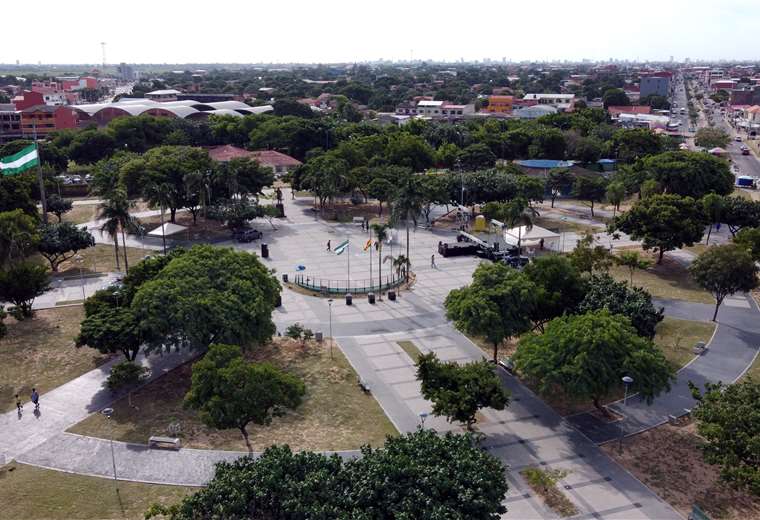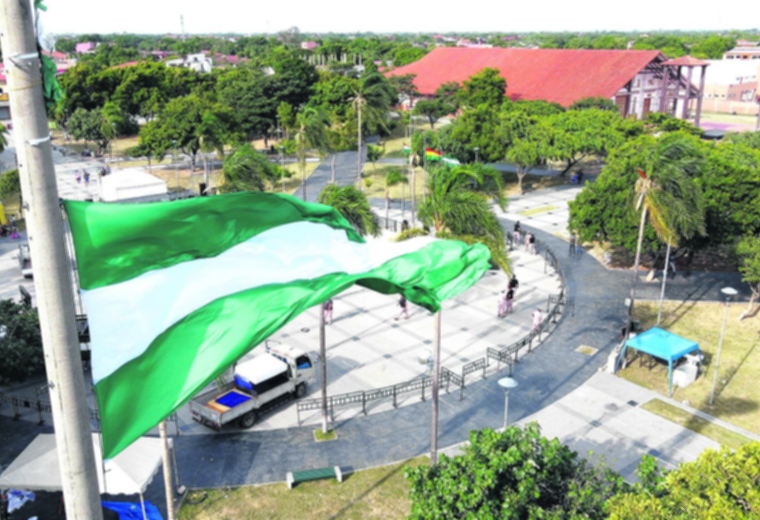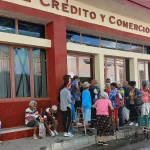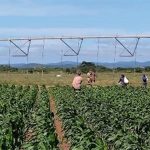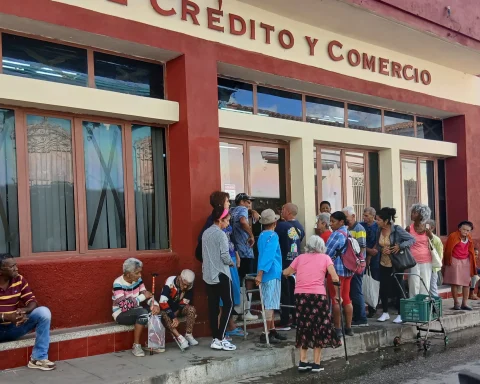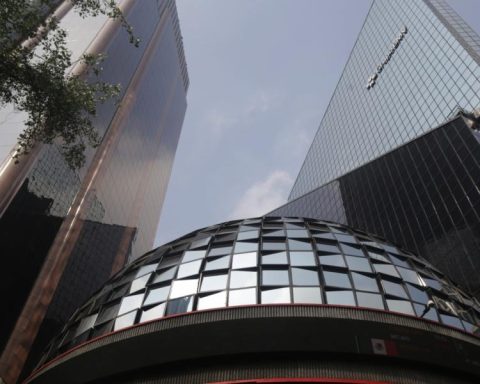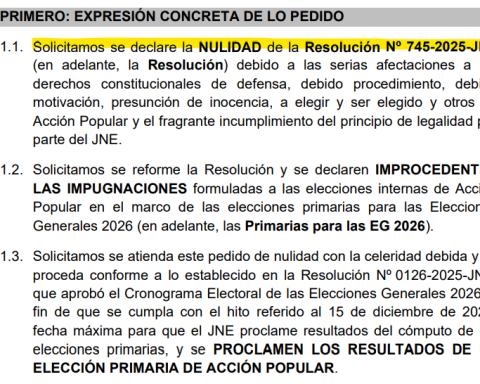March 6, 2023, 5:00 AM
March 6, 2023, 5:00 AM
Since 2011 has anthem, and from 2019, flag. In addition, the institutionality, but especially the founders, work in a bill, protected by the dream that Plan 3,000, one day not too far away, will finally become a municipality.
According to him 2012 census, with its 320 thousand inhabitantsAt that time, the Andrés Ibáñez citadel was already more populated than the city of Montero, and the Pandino department, and demographic projections for today do not differ much.
Despite the aspirations and the numbers, for now the “children and grandchildren of the turbion of 1983” They are only the municipal district (DM) number 8 from the capital of Santa Cruz.
This reality does not daunt them. They believe that managing their own resources and works is the only way for progress to keep up with the population explosion.
This idea has entered not only the heads of the founders of Plan 3,000, but also the new generations, who already they began to bet on institutionalization.
“Now, the citadel has more than 400,000 inhabitants. It started with nine neighborhoods, today it has 155, but the Mayor’s Office cut off 21 of usput them on the DM7 list,” said Freddy Córdova, president of the Founders Association.
He assured that “everyone” (deputies, authorities, etc.) agrees every time the preliminary project to be a municipality is proposed, but that the true acceptance will be seen when it is finalized and socialized.
“We want to be a productive municipality that generates institutions, job sources. The draft is being worked on by a legal team, surveyors, engineers, etc., it is interdisciplinary, ”he advanced, but preferred not to give an exact completion date.
Córdova explained that, as part of that search, and to meet the requirements, they created their own anthem and flag, “which is hoisted publicly,” he emphasized, adding that they even have two water cooperatives.
As an example that growing is not a sufficient argument to progress, Córdova lamented that the citadel only have a second level hospital, Los Pocitos“which does not supply, because the regulations say one of the second level for every 60 thousand inhabitants. So we should have five or six,” she argued.
He also recognized that there are pending citizen security, since there are empty citizen modules“because the Command says they lack personnel to distribute.”
Another claim has to do with a faculty of the university in the citadel. He believes that the percentage of high school graduates who take and complete higher education is low.
Photo: Freddy Córdova was honored by the municipality of Santa Cruz
children of the storm
Freddy Córdova lived in the Ovidio Santistevan Herrera neighborhood, on the banks of the Piraí River, on Busch Avenue, with his wife and their first child, who was one year old in 1983.
He received a first warning from nature in January of that year, when the water level rose. Faced with the danger, Civil Defense moved the inhabitants from that area to what is now Plan 3,000, but many returned to the initial place, near the river, despite the risk, due to the precariousness of the conditions.
They They were devastated by water and mud on March 18, the date when the anniversary of Plan 3,000 is commemorated.
“They returned because the lots were not delivered to them, they lived in tents, they had conjunctivitis, diarrhea, etc., but the flood came and took them with everything,” recalled Córdova, who was left with only the clothes on the body.
Córdova recalled that there was a lot of corruption involved, theft of materials for the houses that were going to be built for them, and that recently Between 1986 and 1987, the inhabitants enjoyed services more stable basics.
Rómulo Vaca, known as ‘Don Puyo’, lived in Mineros when they invited him to be part of the Plan 3,000 water cooperative, where he worked for ten years. He arrived in 1996 and since then he has not moved. He is not part of the list of founders, but he is the author of the anthem and the flag of Plan 3,000.
“First I wrote a poem, then the anthem and I designed the flag, I also wrote a book with the history of the citadel, 342 pages, approved by the Seduca. I did all this dreaming of being a municipality, and because it is part of the requirements. I stayed because I became attached to it, I was even on the Civic Committee until about four years ago, ”he shared.
The case of Diego Condori, current civic vice president of Plan 3,000, is one of the typical examples of migration and cultural fusion that characterize the citadel.
He explained that, in that area, the civic issue points to the defense of the citizen, since “in fact, and in theory, the Civic Committee is an apolitical institution.”
According to Condori, his work is focused on defending resources and asking for improvements and projects to be brought up to Plan 3,000
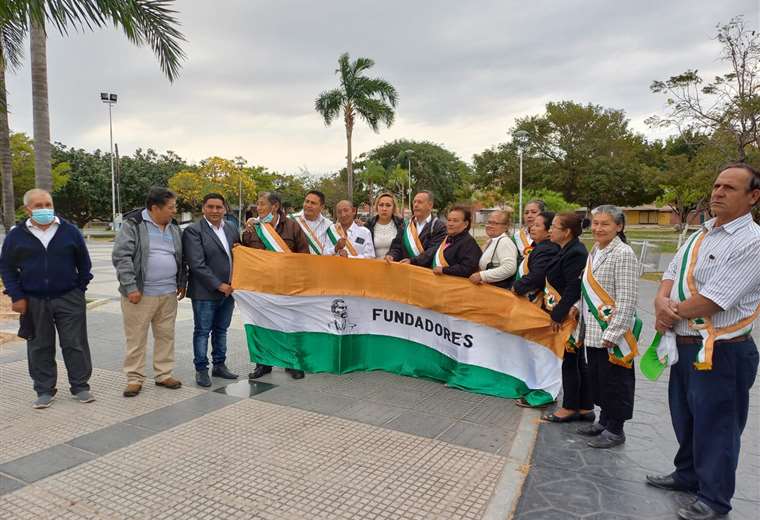 Photo: The flag of Plan 3,000, designed by Rómulo Vaca. It bears the effigy of Andrés Ibáñez
Photo: The flag of Plan 3,000, designed by Rómulo Vaca. It bears the effigy of Andrés Ibáñez
The challenge of being young in the citadel
Rubén Becerra is 30 years old, studied Sociology, makes a living doing consultancies, but also declares himself a defender of human rights, and also a member of the El Mechero Resistance.
He classifies as challenging the fact of being young and living in peri-urban areas, where social and economic conditions are difficult.
According to Becerra, in Plan 3,000, close to 50% of people live informallyand he gave his family as an example, who made him study thanks to the income from a small bakery.
“It is complex to be young in Plan 3,000 because we live in marginality, informality, There is little or no concrete support from the authorities, beyond demagogic speeches,” he said.
However, in that marginality, Becerra has seen an opportunity. “This exclusion has given us some freedom to think and speak. We have nothing to lose because we do not have state support, and all This situation of exclusion gives us the freedom to organize ourselves to overcome difficulties,” he said.
As a young man, he is sure that he is essential to change the face of Plan 3,000 because of the stigmatization that crime has, but he questioned that many focus on making this visible, and that there is little or no debate about the causes.
“It is obvious, if we live informally in the absence of the State, people have to look for it anyway, sometimes with acts that they should not,” he asserted.
As part of the resistance, he regretted that many young people feel persecuted, instead of being given works and projects. “They want to recover Plan 3,000 using fear. In other times it would have been more feasible to conquer us with works”, he said regarding his resistance, which was created with the strike of the 21 days of 2019.
Of seven siblings in the Becerra family, only two have completed a professional career. He is convinced that informality reproduces informality if there is no state support, and without the investment of the companies. He had schoolmates who today sell soft drinks in the markets, or chicken in the kiosk, and he considers that they are not exceptional cases in Plan 3,000.
Becerra is another firm believer that Being a municipality would help them solve their problems and needs. For now he is doing his part, he says that with the resistance they organize cultural activities, and try to influence politically, with neighborhood councils for example.
On the 40th anniversary of Plan 3,000, young people will be part of the festive agenda with a hiphop festivalthe first planetary freestyle music festival, with the aim of positioning urban culture in the citadel.
“We also want to use it as an example so that it can be reproduced in different places, as a way of appropriating public spaces,” he said, as a way of eradicating the idea that Plan 3,000 is a red zone.
Rubén Becerra’s family is not on the list of founders, he arrived at the citadel in 1985, but Rubén dreams of changing this reality.
Context
According to the 2001 census, the citadel had 148,702 inhabitants, in 2012 with 320,000, and the Local authorities believe that today it exceeds 406 thousand.
The citadel was born in 1983 from the transfer of 3,000 families to that pointHence its name was born.
Later, in 1985, migrants began to arrive from all over the country, when the relocation of the mining sector, since the mines began to close, and the miners of that time became merchants. People from indigenous peoples also arrived, such as the Guarani and Ayoreo.
This March 18, they will celebrate 40 years of being reborn from mourning and pain that the Piraí River left them in 1983, when it destroyed their homes, and also their loved ones.